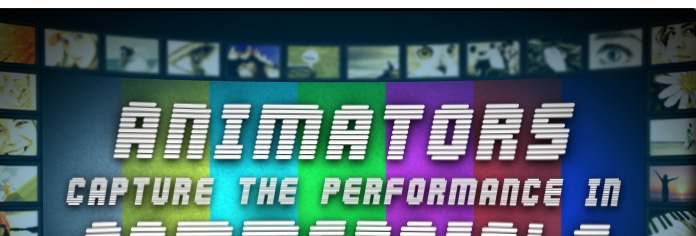

|

|

|

|

|

|
|
|
Animators Capture the Performance in Commercials
By Jake Friedman Commercials: We use them to take a bathroom break or else TiVo them out of our consciousness. Once in a while, we are forced to give pause – usually with our remote control – and take notice of a particular ad. TV commercials have become more innovative in their graphics and sharper in their storytelling, providing more job opportunities for animators. It takes a certain type of animator to tread water in the break-neck pace of commercial production. Here are a few of the standouts: Valdimar Baldvinsson sits at his desk in Framestore's Iceland studio. "My experience working in commercials has been very positive," he says. "Learning more about animation is what I'm doing at the moment and working on commercials is an excellent way to do that. I get the chance to try different animation on different characters fairly quickly." Baldvinsson originally studied architecture before he enrolled in Animation Mentor in 2006. In the meager time since graduation, he's worked on feature films, a game development project, and commercials for Geico, Merrill Lynch, and Ask.com. "The 'Ask Jeeves' commercials for Ask.com were very challenging and exciting," says Baldvinsson. "We did six TV commercials for the reintroduction of the butler Jeeves for their UK website. Not only was it a reintroduction, but also a reinvention of Jeeves look and manner. I got the chance to work not only on the animation, but on other parts of the production as well." For Baldvinsson, commercials have been a good way to stretch his creative muscles. "Commercials are usually produced in a much smaller team than feature films. That requires you to help out in other aspects of the production, which makes you understand the whole production better. In a small team, you also have more of a say on how to make the end product better." Though having recently finished work on the new Bioshock II game and the film Cloudy with a Chance of Meatballs, Eric Luhta put in his dues at Psyop, a New York studio and commercial house. Luhta said his assignments ranged across the board "from cartoony animation for Fanta and Zune, to a more naturalistic style with the Michelin man, to realistic for Mountain Dew and Nokia." "Psyop has its own unique design voice, and everything was a new challenge and learning experience," he said. Luhta began learning animation in Arizona at the University of Advancing Technology, and finished his studies at Animation Mentor. "Once that happened, I feel like the real education began," says Luhta. An important lesson: the customer is always right. "One thing that took some getting used to was that nothing is really final until the project is over and delivered," said Luhta. "Anything can be changed at any time, even if it's been 'approved' for weeks." For that reason, he aims to show his progress as clearly as possible. "You have to get things working quickly where it's smooth and readable, but not where you've spent days on it. Getting a splined pass that doesn't have any hitches or obvious 'needs work' sections is what I shoot for. The stuff animators care about, like perfect arcs and refined overlapping action, etcetera, can usually be done later." Luhta does his best to understand his client. "Clients are focusing on very different things than an animator is," said Luhta. "I've seen plenty of fantastic animation that a client didn't like, and animation that had poor arcs or polish that they absolutely loved. It's the animator's job to find that balance in making your work satisfactory to you and them, which I think is the core challenge of what we do in commercials. We're creating something that's primary reason for existence is to sell something. If it entertains in the process, great, but that's secondary." John Vielee has been a freelance character animator based in New York City for about a year. "I've had the chance to work on some really cool stuff," he says, noting his work on Duke the talking dog of Bush's Baked Beans, and animating Muhammad Ali and Mike Tyson. "The best was working on the GE Scarecrow," he says about the ad that aired during the Super Bowl last year. Vielee sought vainly for a satisfactory animation program at college in New Jersey before going to graduate school in New York and then applying to Animation Mentor. His techniques are based on good ole drawn animation how-to's. "The twelve principles are always at the forefront of my mind when animating," he says. "When I'm blocking out a shot, even if it's just rough blocking, I try to block in everything all the way down to the finger tips and lip sync. I'll start with my golden poses first, and then move onto the extremes and the overshoots, from there I'll work on the ease-ins and ease-outs, and then the passing poses. With each phase, I'm thinking about all the poses as if they were drawings, again making sure to block and pose everything. I try to get things down to somewhere between 2's and 4's. It just makes splining that much easier." Despite his old school method, Vielee says of commercials, "I was surprised by how many shots had CG elements. I don't think the average person realizes just how much of their daily TV watching has something created digitally in it." Next time you glimpse the Coke: Happiness Factory ad campaign, you might catch the work of Kyle Mohr. Mohr has taken a big bite from the freelance pie, working for New York studios like Psyop, Framestore NY, Panda Panther, Click 3X and 1st Ave Machine. Recently, he has moved onto work on the last two Blue Sky features. "My first college was the former Marycrest International University in Davenport, Iowa, where I studied Computer Graphics," says Mohr. "This helped me get acquainted with Maya and general 3D principles, before transferring to the Savannah College of Art and Design." The shift in education may have prepared Mohr for his varied freelance portfolio. Mohr seems to credit his entrance into film with his experience in commercials. "I think what's unique about working as a freelancer in commercials is the opportunity to get a lot of experience with a lot of different places fairly quickly," he says. "For someone just starting out, I think it can really help broaden your perspective of the industry. You can get a sense of how different places handle production, what sort of work environment they provide, and the overall 'feel' of the place. These days, you can get that working in film as well, but in commercials the projects are shorter so that experience has the potential to come more quickly." Freelancing has its share of educational elements for Mohr. "Most places are hiring on a per-project basis," he says. "Starting out as a freelancer has helped me to understand that lifestyle early, and learn to be responsible for my own finances and benefits such as health insurance." With more compelling CG animation in commercials, we've been seeing more in other media, including bits in live-action film. Character animation on the screen is growing altogether, and it's an exciting time to see the animation in a commercial reflect the art of the motion picture, and vice versa. Hollywood might be the mecca for some character animators, and let's face it – Hollywood can afford the polish. "But for the most part the focus is still on getting the right performance," Mohr says.
About Jake Friedman Jake Friedman is a New York-based animator. Visit him at http://www.jakefriedman.net. |
|